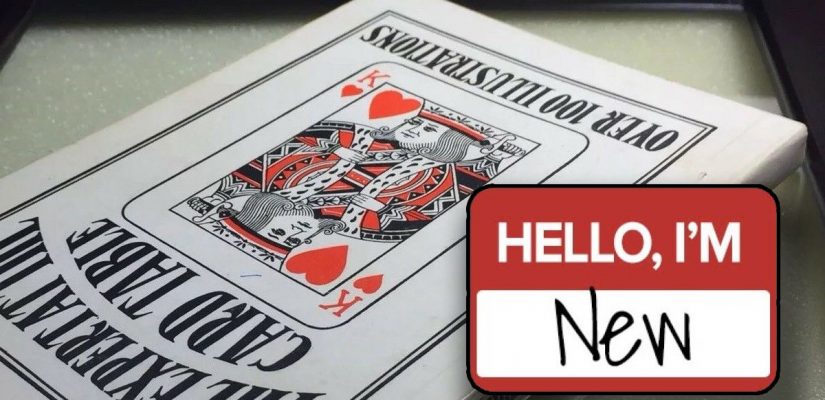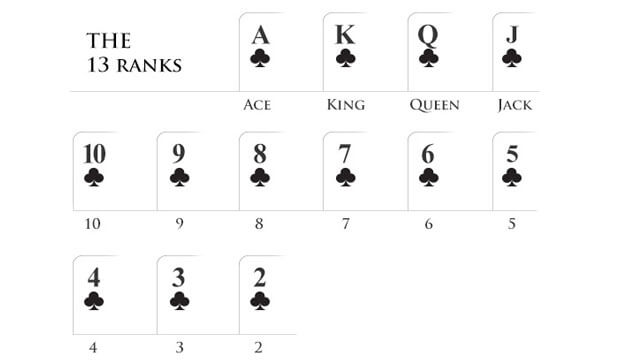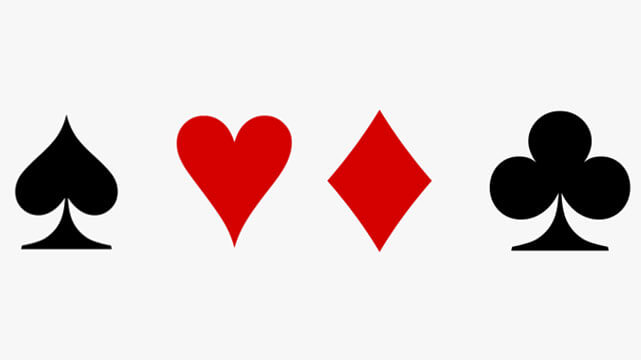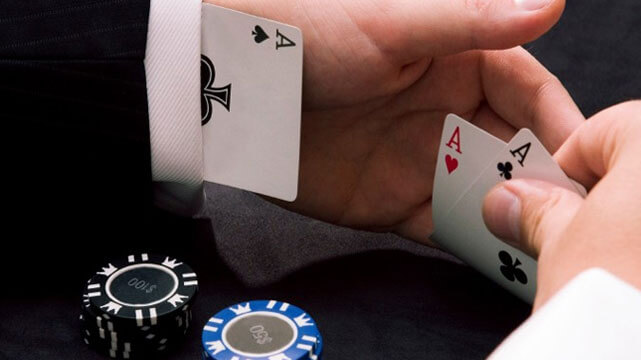
One of the most popular ways to gamble is to play card games.
I know it seems impossible, but I’ve met people who don’t know the first thing about a deck of cards.
This post aims to provide a concise introduction to card games for people who know absolutely nothing about the subject.
The Features of a Standard Deck of Cards
Most card games are played using a standard deck of cards. Whether it be a physical deck of cards or digital deck if playing at real money online casinos.
What does a standard deck of cards consist of, though?
You have 13 cards in 4 different suits, and you also sometimes have a joker.
Let’s talk about the joker first, as there’s only one of them, and there’s less to say about that card than any of the others.
The joker is used as a wild card in games like poker. It has no real value of its own. Instead, it acts as an in-game chameleon that can take the role of any card you need to improve your chances of winning.
It has no rank or suit of its own.
All the other cards in the deck have two qualities – rank and suit.
A deck of cards has 13 ranks, as follows:

The ranks’ significance varies from game to game, you need to know this to start:
Each suit has one card of each rank.
A deck of cards is also divided into four suits:

The clubs and spades are colored black and have different symbols on them. The diamonds and hearts are colored red. They also have different symbols on them.
Almost everything that happens in a card game concerns rank, suits, or some combination of the two.
What Deeper Meaning Do these Features Have?
Tex Ritter sang a song called “Deck of Cards,” in which he explains how a deck of cards can be an almanac, a Bible, and a prayer book, all at the same time.
That’s because almost everything about a deck of cards represents something else.
Days can be divided into daytime and nighttime. Cards in a deck are either red or black. Also, the Bible consists of two books – the Old Testament and the New.
You have four seasons in real life, and you also have four suits in a deck of cards.
You have 52 weeks in a year, and you also have 52 cards in a deck.
You can even count the number of picture cards (the jacks, queens, and kings) to get the number of months in a year.
Listen to the song to hear some of the other parallels between a deck of cards and the rest of the real world:
Card Game Categories
Experts classify card games into categories based on gameplay and by in-game goals.
Here’s a look at some of the major types and what they mean:
Comparing games are card games where players compare the cards in their hand to determine a winner. Poker games are a classic example.
Exchanging games are card games where players trade cards with other players or from the deck of cards in the middle of the table. Rummy games are a classic example.
Solitaire games are card games played by a single person where the object is to put the deck into a specific order using a particular mechanism. Despite the name, some solitaire games can be played competitively.
Trick taking games are some of the first card games many children learn to play. These are card games where you play your card face-up on the table to see who wins a trick. Bridge, Hearts, and Spades are examples of trick-taking games.
Your goals during a card game usually include one or more of the following:
- Capturing cards
- Combining cards
- Comparing cards
- Getting cards
- Getting rid of cards
Etiquette Matters in Card Games
The etiquette involved in playing card games is essential. If you’ve ever watched a movie set in the Old West, you probably already realize this. How many times have you seen someone get shot or beat up for cheating at poker in such a film?

That’s the first rule of card game etiquette:
Don’t cheat.
Ever.
Other matters of etiquette are easy to understand.
Also, when you’re playing cards, some casual conversation is okay, but not at the game’s expense.
You got together to play cards. If you want to focus on free-wheeling conversation, meet someone at a bar or coffee shop for cocktails or coffee.
If you’re hosting a card game, you should ensure that you offer your guests equipment in reasonably good shape.
This means decks of cards that aren’t worn out, comfortable chairs, and quality chips (if you’re playing real money poker).
Food and drink should be avoided unless all the players are careful and responsible. They can mess up the cards.
The rituals surrounding the dealing of the cards are specific, too:
- You don’t look at your cards until all the cards have been dealt.
- The dealer should off the player to his right the opportunity to cut the deck. The player cutting the cards should cut with one hand only and cut toward the dealer, who finishes the cut by placing the rest of the deck on top of the cut cards.
- You always deal to the left, in a clockwise direction, with one card going to each player until all the players have a card, then the rest of the cards are dealt, in the same way – one at a time.
- Don’t comment on a hand that you’re not involved in. Don’t criticize how other people play.
Conclusion
That’s the barest of introductions. Learning how to play cards proceeds from here by choosing a game and learning the specific rules.
The easiest card games to learn to play for a beginner are:
- Crazy Eights
- Go Fish
- War
If you’re brand-new to card games, get someone to teach you how to play those.
From there, you can learn how to play anything else.




You must be logged in to comment. Don't have an account? Sign up today.